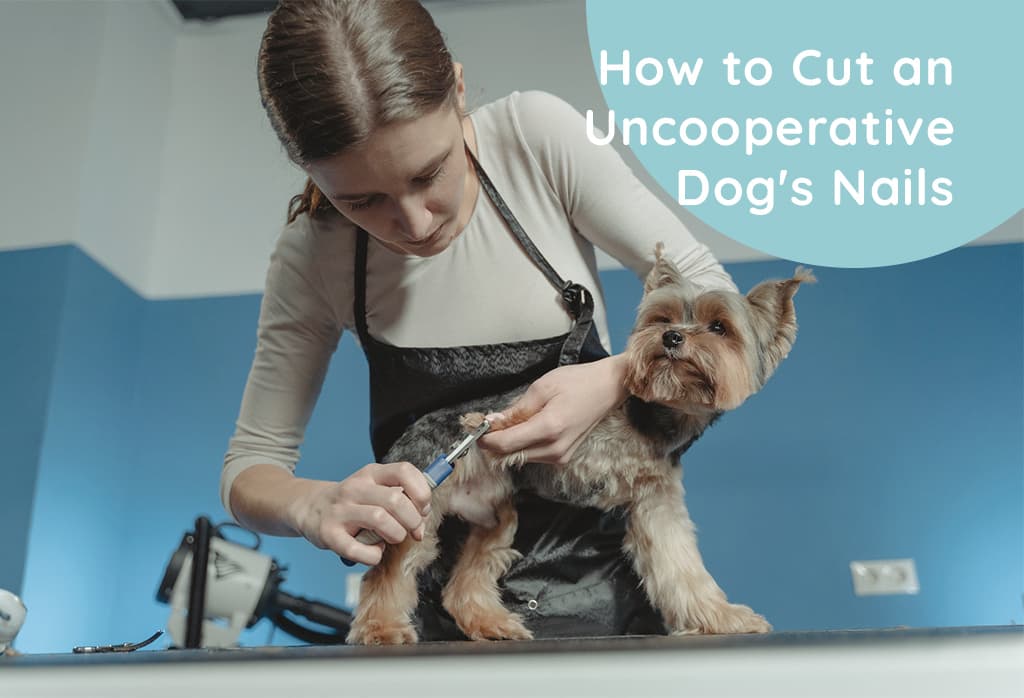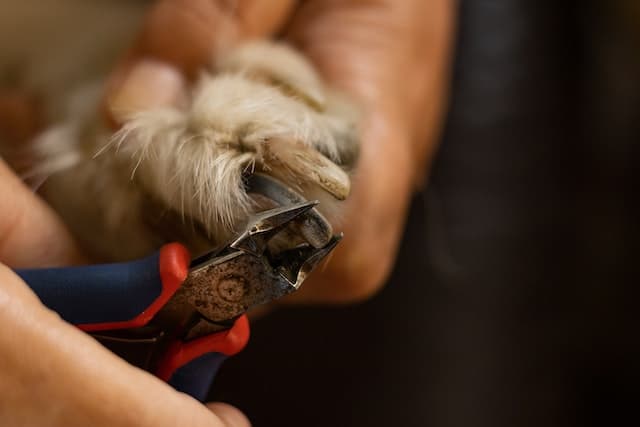So, you’ve got a furry friend who’s not exactly thrilled about the whole nail-trimming thing.
Trust me, I’ve dealt with some, uh, uncooperative creatures before, and I know how important it is to keep those claws in check.
In this blog post, I’ll be sharing some totally awesome tips and techniques to make nail trimming a walk in the park (minus the vampires, of course).
How to Cut an Uncooperative Dog’s Nails
First things first, let’s get into the nitty-gritty of actually trimming those nails.
Preparing the environment
Choosing the right spot
Just like picking the perfect spot for a showdown, the environment is everything.
Find a quiet and comfy place where both you and your dog can relax.
If your dog loves lying on the couch or their favorite rug, it might just be the perfect place to get started.
Gathering necessary tools
You wouldn’t go into battle without the right weapons, right? The same goes for nail trimming.
Get yourself some high-quality dog nail clippers or a grinder, styptic powder (in case of accidents), and some treats for rewarding your four-legged friend.
Building trust and positive associations
Desensitization techniques
The key to any successful mission is preparation.
Start by getting your dog used to having their paws touched.
Gently handle their paws while giving them praise and treats.
This way, they’ll start associating paw touching with good things.
Treats and praise
Everybody loves a good reward, even your dog.
Make sure you have plenty of their favorite treats handy during the nail-trimming process.
Positive reinforcement goes a long way, trust me!
Proper handling and restraining techniques
Holding the paw
Hold your dog’s paw gently but firmly.
Don’t be too rough, but also don’t let them wiggle away.
It’s all about finding the right balance, just like in life.
Positioning the dog
Make sure your dog is comfortable and secure.
Some dogs prefer lying down, while others might be cool sitting or standing.
Just go with whatever works for your dog – it’s their world, and we’re just living in it.
Best Tools for Trimming an Uncooperative Dog’s Nails
Now that we’ve got the basics down, let’s talk tools of the trade.
Clippers vs. grinders
Pros and cons of each tool
Clippers are like the trusty stake – quick and efficient.
But, if you’re not careful, you might nick the quick (the sensitive part inside the nail).
Grinders are more like a slow burn, taking more time but giving you more control.
They’re great for smoothing out rough edges, but they can be a bit noisy, which might spook your dog.
Tips for choosing the right tool for your dog
Consider your dog’s personality and preferences.
If they’re more on the anxious side, a grinder might be too much.
On the other hand, if they’re calm and collected, a clipper might be the way to go.
Just like with any tool, it’s all about finding the perfect fit for your unique situation.
Overcoming Common Challenges in Nail Trimming
Alright, so we’ve got the tools, techniques, and environment all figured out.
But what happens when things don’t go exactly as planned?
Dealing with fear and anxiety
Identifying signs of distress
Keep an eye out for signs that your dog is stressed or scared, like excessive panting, drooling, or trembling.
It’s important to recognize these signs early on, so you can take a step back and reassess the situation.
Providing comfort and reassurance
Be the comforting presence your dog needs.
Speak to them in a soothing tone, offer treats, and give them some space if necessary.
Remember, we’re not here to force our dogs into submission – we want them to feel safe and secure.
Handling aggression or resistance
Reading body language
Dogs can’t talk, but their body language speaks volumes.
If your dog is showing signs of aggression or resistance, like growling or snapping, it’s time to take a break and try again later.
Knowing when to stop and try again later
Sometimes, it’s best to call it quits and try again another day.
You don’t want to push your dog too far and create a negative association with nail trimming.
Just like in any tricky situation, sometimes you need to regroup and strategize before going in for round two.
Professional Help and Alternatives
When all else fails, don’t be afraid to call in the big guns (or, you know, the professionals).
When to seek professional help
Veterinarians and groomers
If you’re struggling with nail trimming, a professional groomer or veterinarian can help.
They’ve got the skills, experience, and tools to get the job done quickly and efficiently.
Signs that your dog needs professional assistance
If your dog is consistently aggressive or uncooperative, or if you’re just not comfortable doing it yourself, it’s time to seek professional help.
There’s no shame in admitting that you need a little assistance.
Alternative methods
Nail caps
Nail caps are soft, plastic covers that you can glue onto your dog’s nails.
They’re a temporary solution, but they can help protect your floors and furniture from sharp nails while you work on getting your dog more comfortable with the trimming process.
Encouraging natural nail wear
Encourage your dog to wear down their nails naturally by providing them with rough surfaces to walk or play on, like concrete or rough-textured toys.
It’s not a complete solution, but it can help keep those nails in check.
Frequently Asked Questions (FAQ)
How often should I trim my dog’s nails?
Generally, every 3-4 weeks should do the trick.
But, keep an eye on your dog’s nails and adjust the frequency as needed.
What do I do if I accidentally cut the quick?
Accidents happen! If you cut the quick, apply styptic powder or cornstarch to stop the bleeding.
Keep an eye on it and contact your vet if you’re concerned.
Can I use human nail clippers on my dog?
It’s best to stick with tools specifically designed for dogs.
Human nail clippers aren’t really built to handle dog nails and can cause damage or discomfort.
How can I tell if my dog’s nails are too long?
If your dog’s nails are touching the ground when they walk or they’re getting caught in things, it’s time for a trim.
Conclusion:
So, there you have it – your ultimate guide to trimming an uncooperative dog’s nails.
Remember, it’s all about patience, persistence, and creating a positive experience for your dog.









